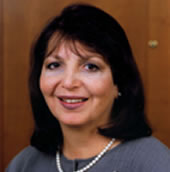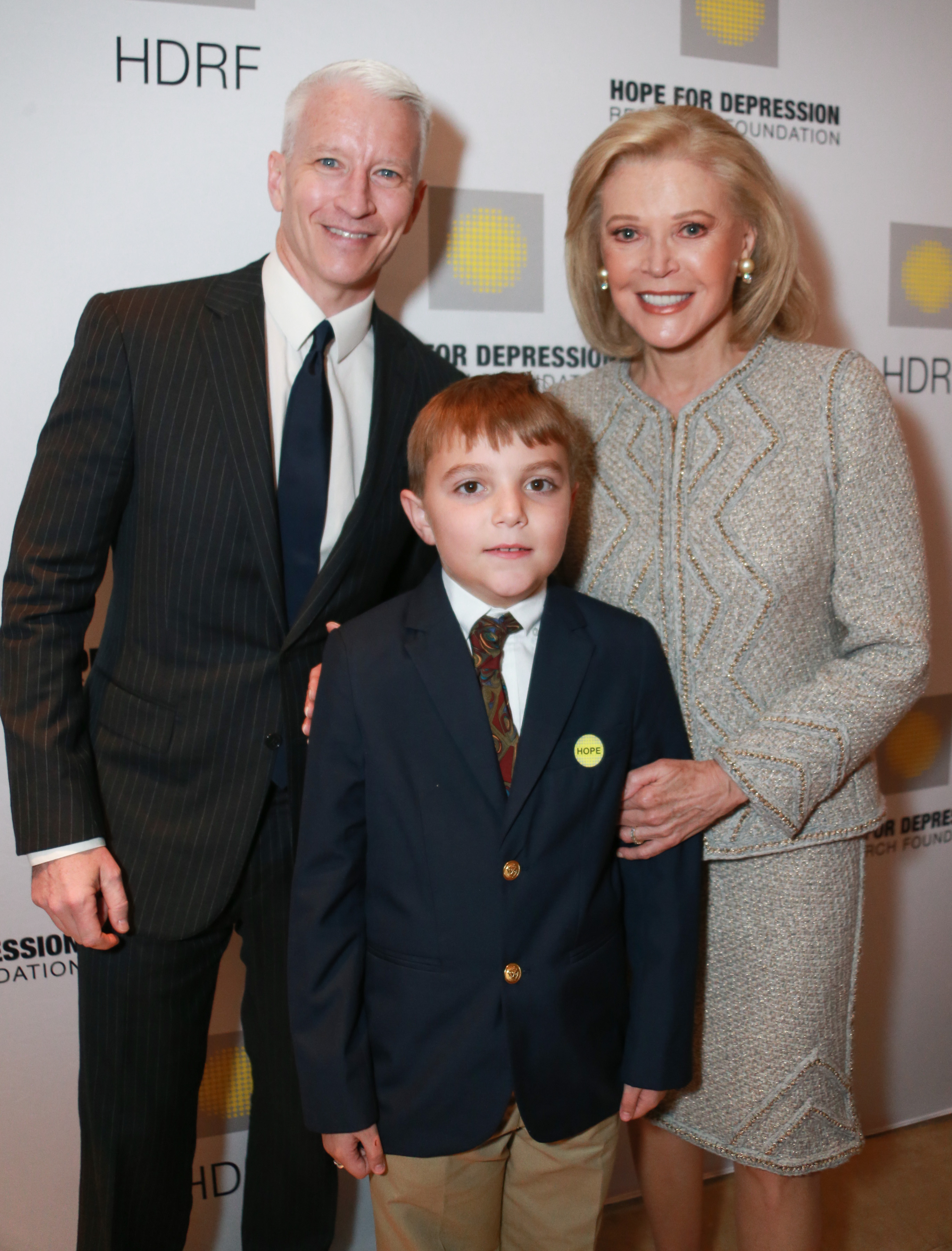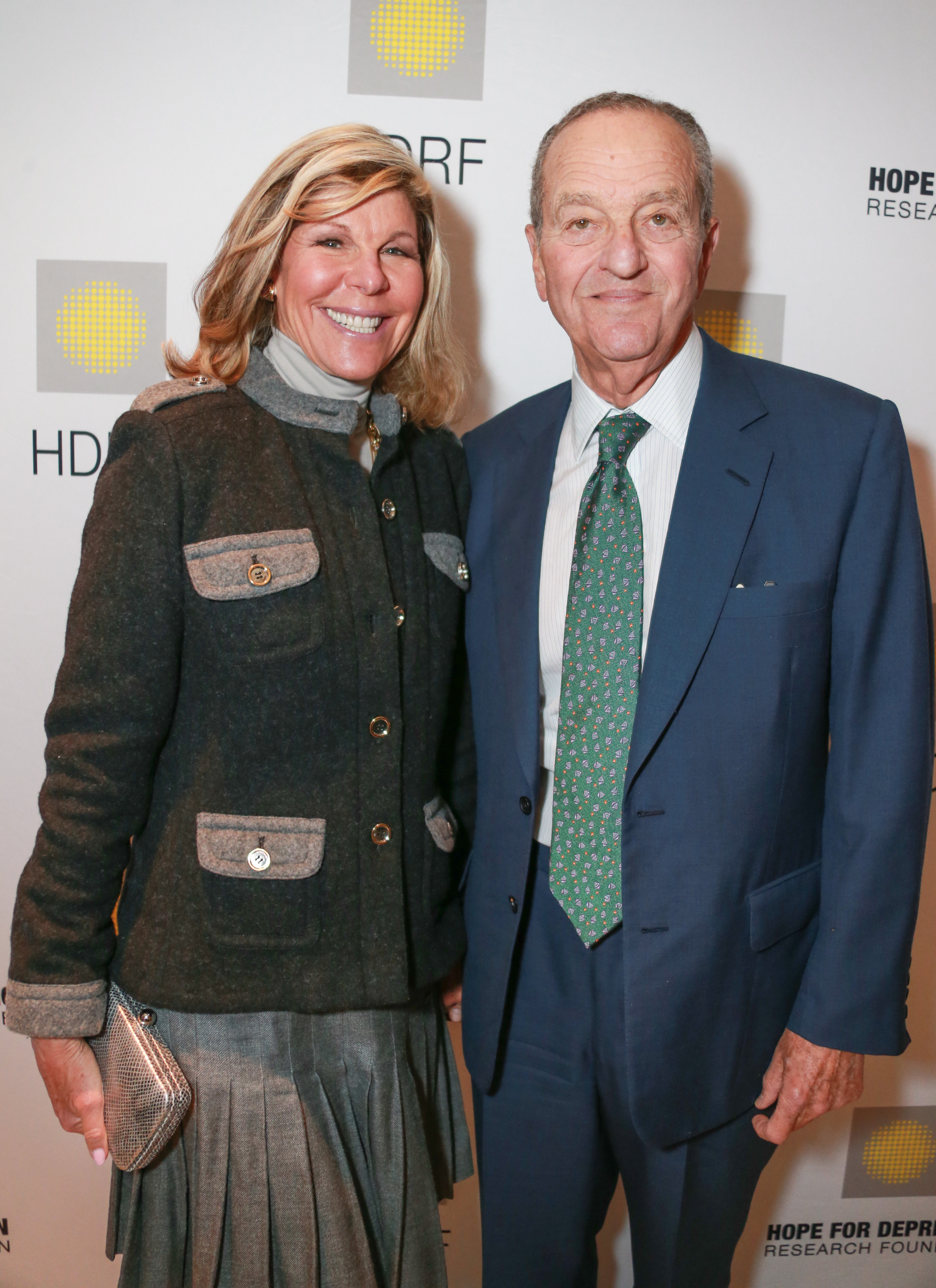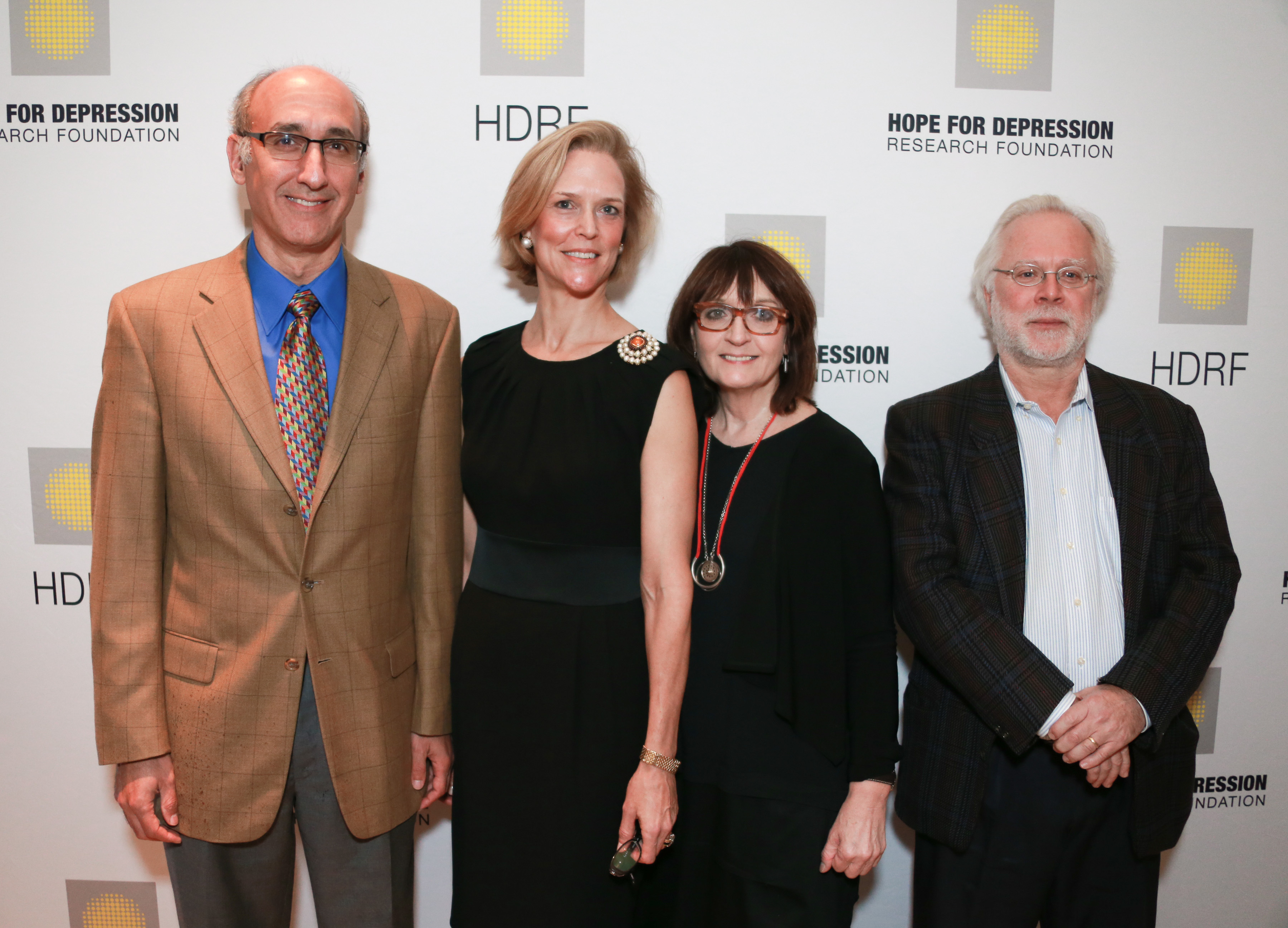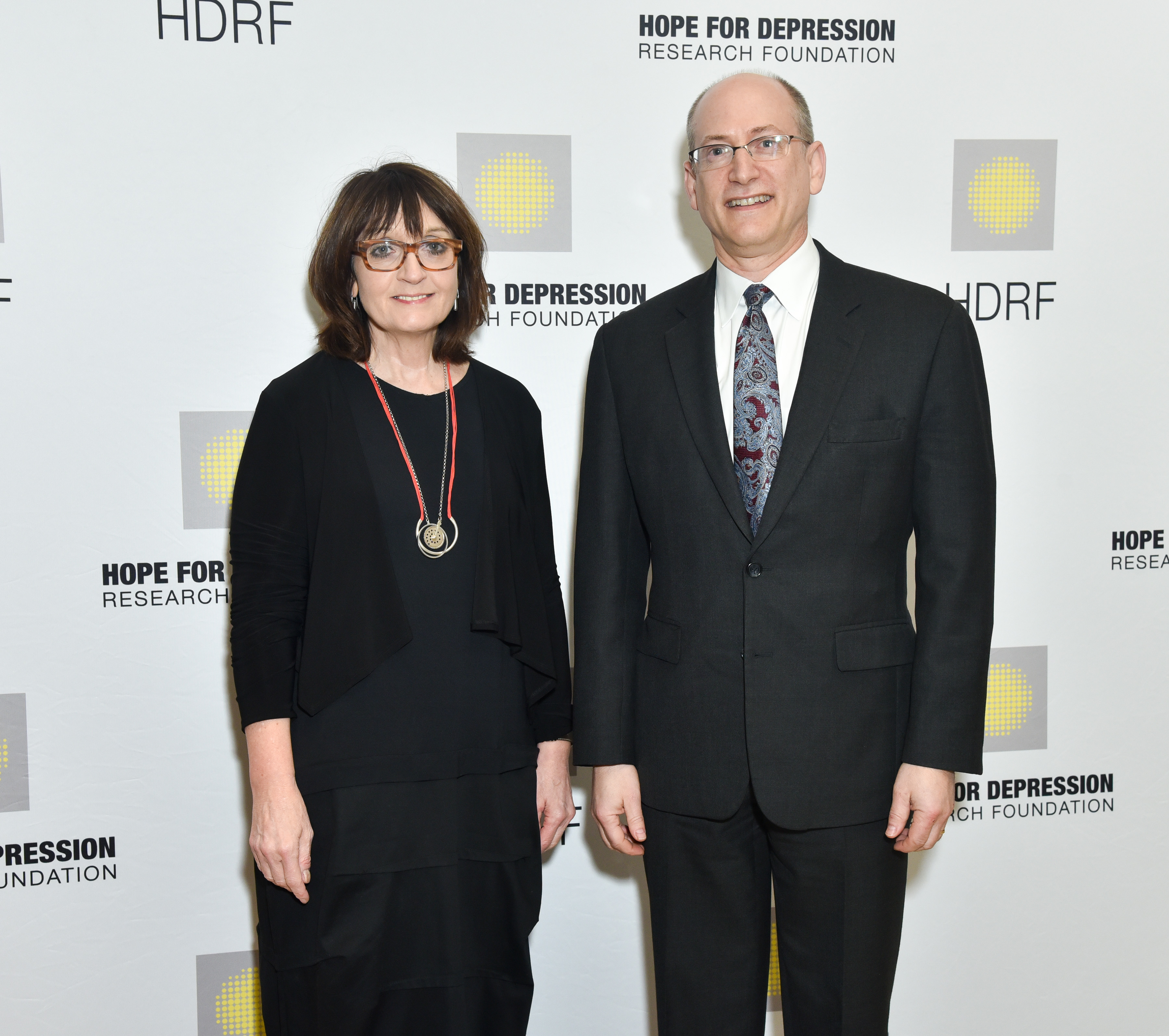
Guest Bloggers
10th-annual-hope-luncheon-seminar,
January 6, 2017
Tenth Annual HOPE Luncheon Seminar
The Search for New Depression Medications
Tuesday, November 15, 2016
The Plaza Hotel
New York City
Chuck Scarborough, 2016 HOPE Award for
Depression Advocacy Recipient, Anderson Cooper
and HDRF Founder & Chair Audrey Gruss
Anderson Cooper, Shane Boylan and Audrey Gruss
Andrea Greeven Douzet and Laura Nicklas
Ann Barish, Jane Marray and Pattie Lynch
Eleanor Kennedy and Yaz Hernandez
Jamee and Peter Gregory
Stephanie Krieger, Elizabeth Thompson, Margo
Langenberg and Roberta Sandeman
Dr. Jonathan Javitch, HDRF Executive Director
Louisa Benton, Dr. Helen Mayberg,
and Dr. Rene Hen
Susan Gutfreund, Audrey Gruss and HRH Princess
Katherine of Serbia
Dr. Helen Mayberg and Dr. John Krystal
Arthur Dunnam and Richard Ziegelasch
Ritchey Howe, Carol Mack, Caroline Dean and
Danielle Gane
Janna Bullock, Zoe Bullock and Nicole Miller
HDRF’s Satellite Media Tour,
December 20, 2016
HDRF founding chair Audrey Gruss conducted a satellite media tour this fall, speaking with dozens of TV stations across the country to bring HDRF’s message to over 15 million viewers.
Latest Post on Psychology Today Blog,
February 15, 2016
Depression in Children
Guest blogger David Brent, M.D., reveals what we know and what we don’t know.
How common is depression in children? Depression occurs in 1-2% of children before puberty.You can even see depression in preschoolers, although it’s much less common. That usually occurs when there’s a strong family history of depression. After puberty the rate of depression increases significantly to about 3-8%, with a higher rate in girls than boys. One in five teens will have experienced a depressive disorder by the time they reach adulthood.
What does depression look like in children? The depressive symptoms of not having fun, difficulty concentrating, guilt, problems with sleep and appetite are similar in children and in adolescents. In pre-pubertal children, depression often emerges in families with high adversity, and these children frequently have other problems, particularly conduct disorder. When you follow depressed children through life, they have continued problems with criminality, substance abuse, and suicide. Depression in adolescence has a course more similar to adulthood, and in fact, depressed adolescents are very likely to have another episode sometime in their adult life. Depressed adolescents often engage in a range of risky behaviors, including alcohol and drug abuse, non-suicidal self-harm, suicidal behavior, and having unprotected sex. In examining the brain functioning of depressed children and adolescents, researchers have found that, compared to healthy youth, they show less effective cognitive control of their emotions, greater emotional reactivity in response to emotional stimuli (like scary faces), and a diminished response to rewarding situations.
What are the biggest risk factors for developing depression? Family history of depression is the biggest risk factor. We know that if you have a parent who is depressed, you’re about four times more likely to develop depression. Studies of twins who are separated at birth show that 50% of depression is genetic and 50% is related toenvironment. Additionally, a parent who had early onset depression is more likely to have children with depression. Risk factors in children include:
· Low birth weight
· Child abuse
· Extreme adversity
· Death of parent at an early age
· Family history of depressive illness
· Insomnia
· Difficulty with emotion regulation
· Cognitive distortion (viewing the glass as half empty as opposed to half full)
· Same sex attraction
· Abuse of cannabis and alcohol
Risk is reduced when a positive relationship between parent and child is present. For example, studies have shown that having dinner with your family every day protects kids against a wide variety of health risk behaviors.
What is the risk of suicide in children with depression? Children and adolescents with depression are about 8-20 times more likely to complete suicide than youth without depression. Most often it is not depression alone, but depression in combination with other conditions, including alcohol and substance abuse, or impulsive aggression. A study found the single symptom that most strongly differentiated kids who completed suicide from other depressed kids was they were much more likely to experience insomnia in the week before suicide.
Family environment plays a significant role. Children in families rife with conflict are at an increased risk for suicide. Additionally, children who are disconnected, without bonds to family, friends, and/or institutions are more susceptible to suicide.
Finally, the availability of a gun is a risk factor. If you look at suicide in adolescents under the age of 16, only 60% have a clear psychiatric disorder. In the remaining 40%, the only differentiating factor from normal kids is that there was a loaded gun in the home of the youth who died by suicide.
What is the expectable course of depression in children and adolescents and how can we treat it? If untreated, the average depressive episode will last four to eight months. If you have an incomplete recovery you’re more at risk for developing chronic depression, which is then more difficult to treat. Depression generally recurs within a five year window. If you look at adolescents that are depressed, almost all of them have episodes into adulthood.
Current best practice involves a combination of medication and psychotherapy. There are many common misconceptions regarding the use of antidepressants for children, especially given the FDA black box warning for adolescent use of anti-depressants. If we look at the risk of suicidal events– and that includes an increase in ideation– in all the clinical trials of over 4,000 kids, there were no completed suicides and the increased risk for a suicidal event only 0.9% over youth given placebo. There are eleven times more kids that benefit from treatment with an antidepressant than are going to experience a suicidal event. In fact, population studies show that there is an inverse relationship between sales of SSRIs and suicide.
Psychotherapy is very important in treating children with depression. The two most commonly used forms of psychotherapy are: 1) cognitive behavioral therapy (CBT) which helps to identify and problem solve around behaviors, and 2) interpersonal therapy, which looks at the child in the context of their social relationships. CBT is preferable for children who are facing a number of behavioral problems as well as depression, however it is not as effective if they have a parent with depression or a history of child abuse. In this case, it is essential to address the parental depression in conjunction with the child’s treatment. Interpersonal therapy commonly helps children with a lot of parent discord or other interpersonal problems. It is important to continue the treatment even after the child is well or you run the risk of relapse. A type of family treatment, termed “attachment-based family therapy” also appears to be a promising treatment for depressed adolescents. Once children and adolescents recover from depression, it is important to provide continued treatment for 6-12 months in order to prevent a recurrence of the depression.
What can we do to prevent it? Interventions that try to augment family resilience, improve parent and child communication and parental monitoring and supervision are effective, and for adolescents, adaptations of cognitive behavior and interpersonal therapies have been shown to prevent depression. .
What are some of the things we can do to improve on the treatment of depression right now? Early detection and treatment are key, since the longer depression lasts untreated, the harder it is to treat. The simplest way to do this is to emphasize what is known as collaborative care, which imbeds therapists in primary care practices to reduce the problem of stigma and provide easier access for mental health care. Studies have shown that this is much more effective than usual care. Parents should also actively track symptoms in their children and discuss with their child’s treating clinician.
We need to invest in research for new treatments for children that have experienced a lot of adversity, as they represent a large portion of the clinical population for which we do not yet have effective treatments.
The need for continued research
My colleague Lisa Pan and I run a clinic for depressed and suicidal kids with treatment resistant depression. We had one child with a chronic history, who had not responded to medication or ECT. Lisa Pan sent him to a geneticist, who did a spinal tap, which revealed that he had a low level of biopterin, a molecule that is needed to make every neuro-transmitter. The geneticist therefore recommended giving him Kuvan, a precursor of biopterin. The child recovered. We thought to ourselves, how many people are out there with this? She got a grant and started a study with adults and out of around 40 people she’s studied so far, she’s found various metabolic abnormalities in more than half of them. We could not have predicted this, and this serendipitous discovery shows us the need for continuing our research. Not much is known about what causes depression, and organizations like HDRF are dedicated to finding the root causes of depression, which will lead to new and more effective treatments.
About David Brent, M.D.:
David Brent is the Chief of Child and Adolescent Psychiatry at the University of Pittsburgh. He was recently a featured speaker at Hope for Depression Research Foundation’s 9th Annual Luncheon Seminar. Dr. Brent is Co-founder and Director at Services for Teens at Risk (STAR), a Commonwealth of Pennsylvania-funded program. Dr. Brent’s work has been funded by the William T. Grant Foundation and the National Institute of Mental Health, and he currently directs an NIMH-funded Advanced Center for Interventions and Services Research for Early-Onset Mood and Anxiety Disorders devoted to improving the life course of youth with mood and anxiety disorders, and consequently at high risk for suicide Dr. Brent received his undergraduate education at Pennsylvania State University and graduated from Jefferson Medical College of the Thomas Jefferson University. Dr. Brent trained in pediatrics at the University of Colorado, in general and child psychiatry at Western Psychiatric Institute and Clinic, and completed a master’s degree in psychiatric epidemiology at the University of Pittsburgh School of Public Health.
Public Awareness Campaign Hits Home,
February 4, 2016
Our new public awareness ad is bringing a message of hope to millions.
The ad was released on Facebook in January and the response to its message – what NOT to say to someone with depression – has been overwhelming.
| Immediately Upworthy – one of the fastest growing websites in the world — contacted us about writing a story around the ad. They interviewed HDRF Board member Dr. Harold Koenigsberg on what to say and do when a loved one has depression. Click here to view.
Meanwhile, the ad has reached over 15 million Facebook users in the past week alone and generated a significant spike of traffic on our website. Over 375,000 people have viewed the ad and written deeply personal notes to thank us. We want to thank McCann HumanCare for creating this powerful and impactful ad, first unveiled at our HOPE Luncheon in November. Here’s a sampling from the thousands of comments we’ve received: “Seeing these posts gives me hope that one day people will understand people like me who are disabled due to severe depression.” “Increased knowledge and education through videos like this are bringing more people to awareness.” “Thank you for showing the world this is a serious illness.” Our mission is to drive science forward and raise awareness about depression as a medical illness. We are excited about clear progress on both fronts. Your support continues to make exciting results possible. |
A Sign of Hope in the News,
January 29, 2016
This week an important story about depression got prominent play on the front page of The New York Times.
Panel Urges Screening for Maternal Depression should come as encouraging news to all those who care about mental health awareness and advocacy.
Government-appointed experts have called for wide screening based on evidence that depression in women both during and after pregnancy is far more prevalent than previously thought.
So what’s the good news? Until recently, post-partum depression was stigmatized and hardly discussed. Today, the issue occupies its rightful place at the top of the national public health agenda.
The study and the well-placed article on the front page of The NY Times is evidence of dramatically shifting public attitudes toward the illness.
We wanted to share the article in case you missed it. We also want to thank public figures like Brooke Shields – who spoke at our HOPE Luncheon in 2009 about her own experience with post-partum depression. Her bravery and her book brought the issue into public light a decade ago.
Thank you for being part of the HDRF community. Your support is capable of changing the world as we work to advance the understanding and treatment of depression.



